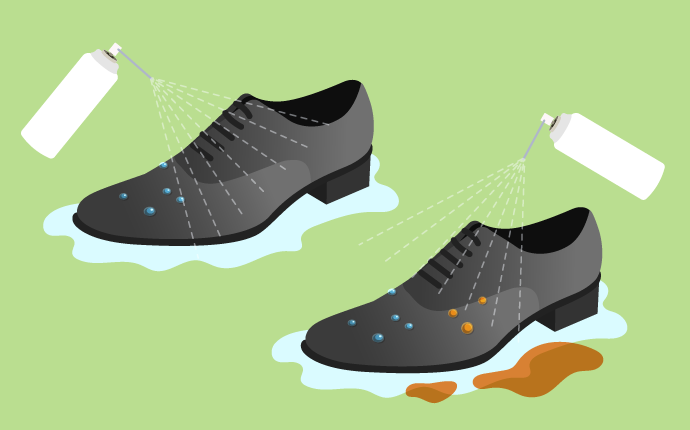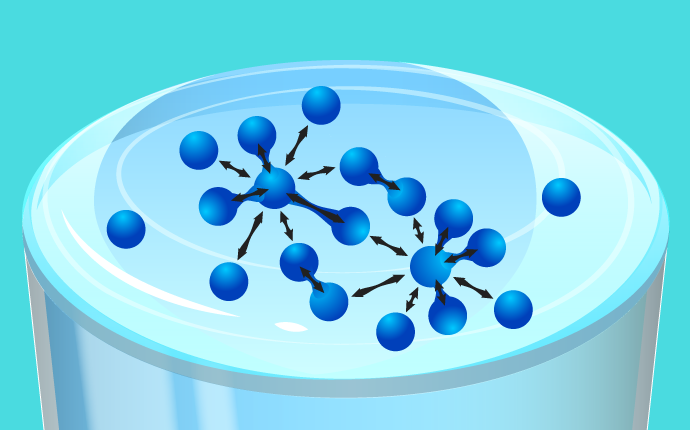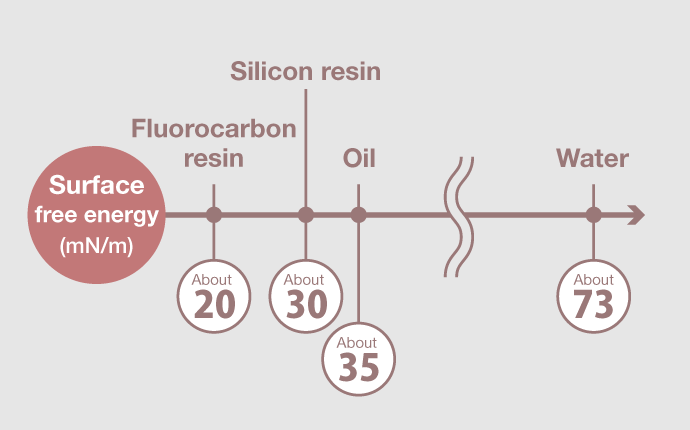When it comes to business, the shoes are what make the impression! Let's learn how waterproof sprays work
“Surface free energy” was the key all along!
As the saying “fashion starts at one’s feet” implies, one’s feet are often visible in business situations. People have a good impression of those who keep not only their suits and hairstyles neat and tidy, but their shoes as well. One surely wants to wear clean shoes for job interviews and important business meetings. How does the waterproof spray used in such cases repel water? ThreeBond’s research and development team will show you how the waterproof spray works from a chemical perspective.
Check before using: Types of waterproof sprays
Waterproofing sprays can be grouped into two main types: “silicone-based” sprays and “fluorine-based” sprays.
Each has its own characteristics, so use sprays according to the application involved.
Learn about the characteristics of silicon-based and fluorine-based sprays
- Silicone-based waterproof sprays
“Silicon resin” is the chief component. Although it demonstrates sufficient water repellency, it cannot be expected to prevent oil stains due to the low level of oil repelling effects it provides. On the other hand, the advantage is that it is cheaper than fluorine-based spray.
- Fluorine-based waterproof spray
“Fluorocarbon resin” is the chief component. In general, it is more water-repellent than silicone-based products. It also repels oil, so one can expect it to reduce oil stains. However, these products tend to be more expensive than silicon-based ones.

When it rains, no doubt that your shoes will get wet even if you have an umbrella with you. That’s why people want high levels of water repellency when it comes to waterproof sprays. Also, when it comes to keeping your shoes in a clean condition for as long as possible, you need to take measures against not only water, but dirt as well. Therefore, “fluorine-based” waterproof sprays which allow one to expect waterproof and stain-proof performance, are more suitable for shoes.
What kind of power do silicon and fluorine have when it comes to repelling water and oil?
That is a matter related to the “surface free energy” of the substances involved.
When you pour water into a cup, for instance, no doubt that you have seen the water look like it’s close to overflowing, but instead just curves at the rim of the cup. This is due to the “surface free energy (surface tension)” of water.

Surface free energy is the mutual pulling force existing between the molecules found within substances. Water molecules demonstrate a strong mutual pulling force, resulting in a strong pull towards the inside. That means that the water can become rounded at the cup’s rim.

Why does “fluorine” repel water and oil better than “silicon” does?
Surface free energy is the mutual pulling force existing between the molecules found within substances. In other words, it can also be described as “a force which tries to attract the molecules of an object with which contact is made.” The level of surface free energy is determined by the substances involved.
Therefore, the lower that the surface free energy of the waterproof spray is than water, the less it attracts water. In other words, it means that water is repelled. Fluorocarbon resin has lower surface free energy than silicon resin does, so it repels water to a greater extent.
The surface free energy level of oil is about 35 mN/m, which is about the same as that of silicon resin. Since the mutual pulling forces of each material are balanced, the oil becomes attached. Fluorocarbon resin, on the other hand, has a surface free energy of about 20 mN/m, which is lower than oil. That means it can repel oil, although not as much as it can water.
For this reason, fluorine-based waterproof sprays repel water and oil better than silicone-based ones do.

So, have you gained an understanding of the mechanisms of waterproof sprays that are commonly found all around us? These are the mechanisms by which one can keep their shoes beautiful for create an impression of professionalism.
ThreeBond’s R&D staff not only understand the mechanisms behind how things stick together, but also how substances “repel” one another, as is the case for waterproof sprays. They are working away at product development every day based on this understanding. If you want to know about ThreeBond businesses and the work of its R&D staff, or if you want to know about ThreeBond repelling products, please visit the link below.
